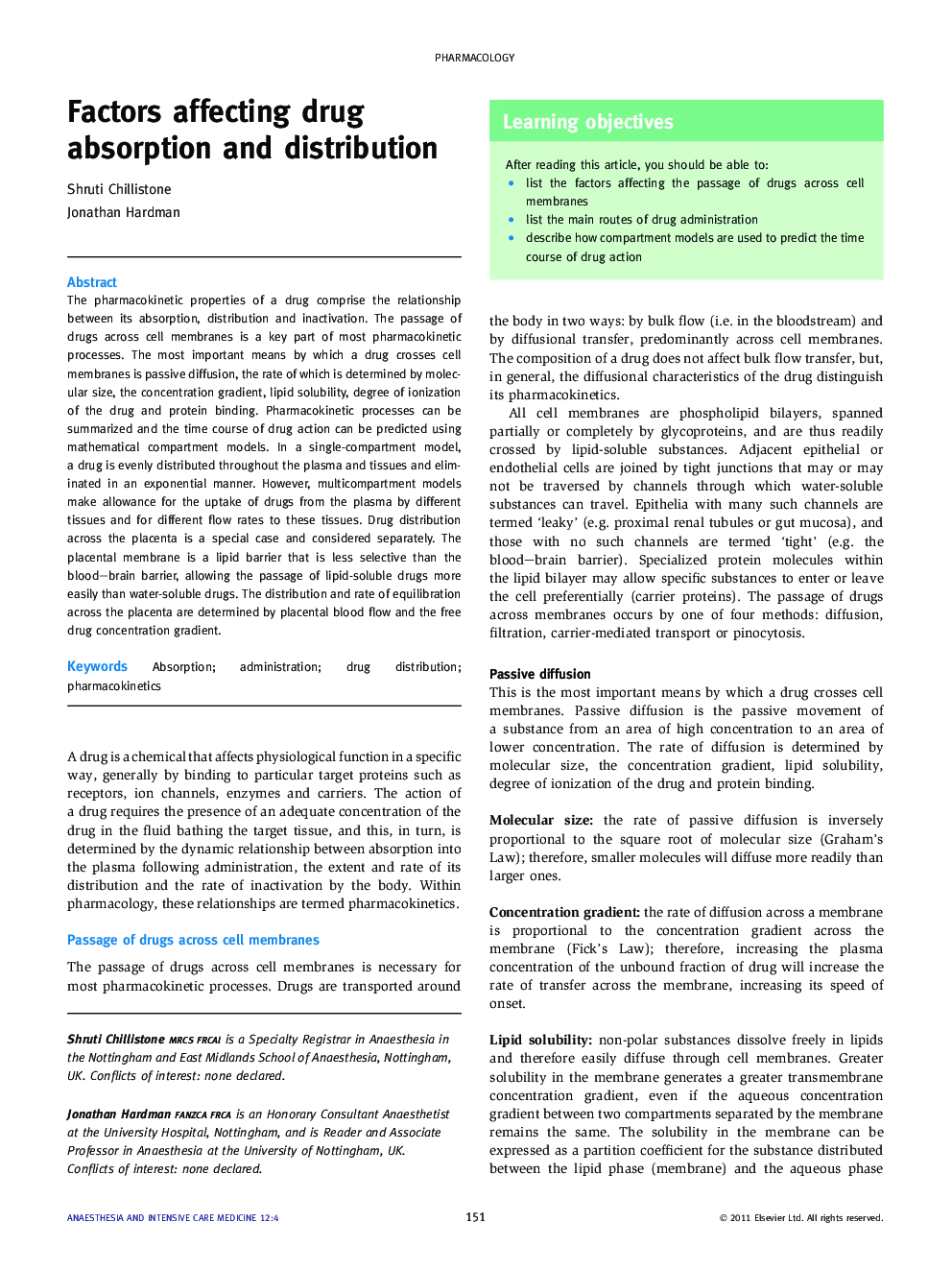| Article ID | Journal | Published Year | Pages | File Type |
|---|---|---|---|---|
| 2742813 | Anaesthesia & Intensive Care Medicine | 2011 | 5 Pages |
The pharmacokinetic properties of a drug comprise the relationship between its absorption, distribution and inactivation. The passage of drugs across cell membranes is a key part of most pharmacokinetic processes. The most important means by which a drug crosses cell membranes is passive diffusion, the rate of which is determined by molecular size, the concentration gradient, lipid solubility, degree of ionization of the drug and protein binding. Pharmacokinetic processes can be summarized and the time course of drug action can be predicted using mathematical compartment models. In a single-compartment model, a drug is evenly distributed throughout the plasma and tissues and eliminated in an exponential manner. However, multicompartment models make allowance for the uptake of drugs from the plasma by different tissues and for different flow rates to these tissues. Drug distribution across the placenta is a special case and considered separately. The placental membrane is a lipid barrier that is less selective than the blood–brain barrier, allowing the passage of lipid-soluble drugs more easily than water-soluble drugs. The distribution and rate of equilibration across the placenta are determined by placental blood flow and the free drug concentration gradient.
